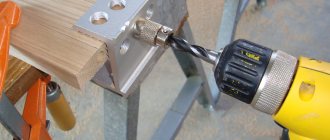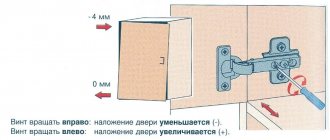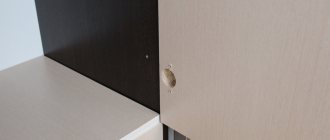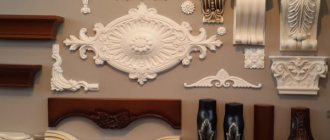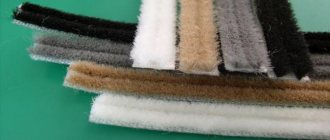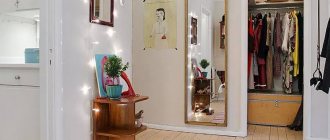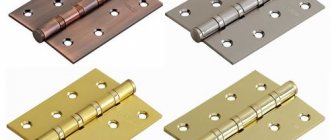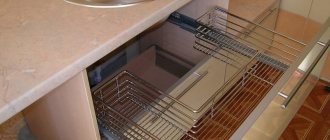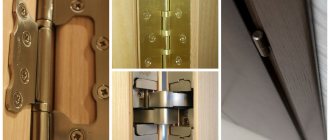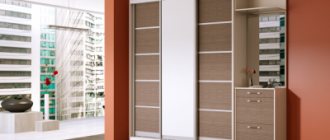About Ferrari
The history dates back to 1953. Today, a small family business in northern Italy has grown into a world-famous company with a factory area of more than 100,000 sq.m. and a staff of about 250 people. The company structure, which remains owned by the Ferrari family, also includes four subsidiaries in other countries: Ferrari America Inc. in North Carolina, Ferrari Germany GmbH in Germany, Ferrari UK in Great Britain and Ferrari Greece in Athens, the main purpose of which is to deeply study the demand and needs of customers in these regions. The plant in Italy has production lines for the production of more than 1,500 types of functional furniture fittings, including 20 series of four-hinged hinges, the most popular of which are Anyway Clip, Slide-On, Key-Hole, and hinges for aluminum frames. All series are available for 26 and 35 mm cups. On average, the plant produces about 170,000 hinges per year, of which 80% are exported to more than 60 countries around the world. Currently, Ferrari has more than 200 patents registered in various countries. The KLOK kitchen elevator received the award for “functional design and quality materials” at the Interzum trade fair in Cologne in 2003.
Installation of various types of hinges
Methods for installing hinges for gates, doors and furniture facades are somewhat different from each other. Let's look at each method in more detail.
Furniture hinge installation
Installation of internal hinges on furniture facades is carried out according to the general scheme shown in the figure.
Layout and installation diagram of the main elements of the loop
During the installation process, it is recommended to proceed as follows:
- The first stage is to apply markings at the locations of the loops. Since a furniture hinge consists of two main elements (a cup and a striker plate, which are respectively installed on the front and frame of the cabinet), markings must be made on both surfaces;
In order to avoid making numerous measurements and calculating the location of the loop components, you can use a template during installation.
- the next stage is drilling holes for the hinge cup and fasteners. To perform the operation, a drill with various attachments and drills of suitable diameter is used;
- installation of the main part of the loop, equipped with a cup;
Attaching a furniture hinge to the facade
- installation of a strike plate;
- The final stage is adjusting the loop, which can be done in three directions.
Aligning the door relative to the furniture body
Installing a door hinge
To install internal hinges for doors, you need:
- Mark the area where the hinges will be installed on the side of the door leaf and the door frame. For convenience and speed of marking, you can use specialized templates;
Determining where to install hinges
The optimal place to install the hinge is considered to be an area located at a distance of 15-20 cm from the upper and lower edges of the door leaf and frame.
- In the door leaf, using a milling machine (in the absence of a device with a hammer and chisel), a piece of wood is removed to make a recess. If the installation is carried out on a metal door, then the hinge is located between the door leaf and the casing;
Preparing holes for mounting a door hinge
- holes for the mounting bolts are drilled with a drill;
- the loop is fixed and, if necessary, adjusted.
Screws for adjusting the door inner hinge
Additionally, you can watch a video about the correct installation of internal hinges on an interior door.
» alt=»»>
Installing a hinge on a gate
To install internal hinges on a gate or gate with your own hands, you will need a welding machine, since the connection between the hinge and the metal surface of the gate (wicket, support posts, etc.) is considered unreliable.
Installation when using welding is carried out in the following way:
- places for installing loops are selected. The number and dimensions of the hinge are calculated based on the weight and overall dimensions of the gate. If it is necessary to install two loops, then they are located at the top and bottom at a distance of 15-20 cm. The third and subsequent loops are mounted evenly in the space between the two outer ones;
For a door weighing no more than 30 kg, installation of additional hinges is not required.
- after determining the location, it is necessary to apply preliminary markings;
- the area in which the welds will be located is cleaned of dirt and rust. To do this, you can use a simple metal brush or a special attachment for a drill;
- steel internal hinges consist of two parts connected to each other by a pin. First of all, the part of the hinge intended for installation on the gate or wicket is welded. The weld seam must be located along the entire length of contact between the hinge and the gate facade;
Recommended type of weld to be used
- the correct opening of the gate leaf (gate door) is checked. Defects are eliminated by hitting the loop with a hammer;
All loops must be on the same line and in the same plane.
- the second part of the loop is welded onto the support post or metal gate frame (depending on where the loop is installed);
- two parts of the loop are connected by simply hanging one part on the pin of the other component;
- Weld seams are leveled and cleaned before further processing.
The choice of hinges for installation is made based on its purpose, since furniture, door and gate hinges differ significantly from each other. Installation of various types of hinges is done with your own hands if you have the simplest tools and acquired knowledge.
Ferrari hinge series
| Series | Cup diameter | Milling depth for cup | Series features |
| Slide on 95 | 35 mm | 11 mm | Loops in this series are the most common. To install on the pad, the hinge is “slided” onto the pad so that the mounting pad screw fits into the groove on the back of the hinge arm (see section “Installing Hinges”). In the MDM assortment, this series is represented as widely as possible - various types of hinges are available (inset, overhead, middle), as well as various installation and opening angles. |
| Slide on 96 | 35 mm | 11 mm | Externally they look like the hinges of the Slide on 95 series, differing from them in the type of spring - these hinges work to open the door throughout the opening cycle (unlike standard four-hinge hinges, which work in two directions - at the beginning of the opening cycle the spring tends to close the door, then , approximately from the middle of the opening cycle, the spring tends to open the door). Hinges of this series are used with the MAGIC system and are used in high-tech furniture (without handles on the doors). |
| Anyway Clip 90 | 35 mm | 11 mm | Hinges of this series are designed for quick installation, as well as for doors with 3 or more hinges. Their peculiarity is that there is no need to “push” the loop at a certain angle onto the platform; it snaps onto it from any position without the use of tools. Removing the hinge is also extremely simple - just pull the latch at the end of the hinge arm. Installation and dismantling of furniture can be done by one person. Large doors with three or more hinges cannot be installed alone. In the MDM assortment there is only one hinge of this series (straight invoice 90/110). |
| Mini 12 | 26 mm | 11.5 mm | Designed for lightweight doors. The hinges of this series differ from the Slide-on and Anyway Clip series by having a smaller cup diameter and, therefore, a lower maximum load. In the arm of the hinge there is a hole in the shape of a key hole, with which it is installed on the platform. These hinges are available for both chipboard doors and glass doors. |
| MiniMAX | 26 mm | 10 mm | Hinges in this series are also designed for small doors. They differ from the Mini 12 series in their smaller milling depth, and, accordingly, the ability to use chipboards with a thickness of 12 mm or more. The Slide-on type fastening allows independent adjustment (for more details, see the MiniMAX section). MiniMAX is designed for a greater number of opening/closing cycles than Mini 12. These hinges are available for both chipboard and glass doors. |
What types of these loops are there?
Leading fastener manufacturers produce large volumes of four-hinged designs with a cross-shaped hinge mounting plate. This fastening allows you to adjust the door with great precision; eccentrics are built into the striker of this design. The cost of such fasteners is higher, but they are more reliable and easier to use. All models have unified dimensions, the dimensions of the loop are the same:
- according to cup diameter (35 mm);
- by distance to the mounting holes.
- Replacing hinges when they fail is simplified.
Frog
This is the name given to a hinge of complex design with 4 rotation units (hinges) and a spring. Thanks to them, the doors open to an angle of up to 175° (the maximum opening value is indicated in the marking). The hinge got its name because of the jumping vibrations when the door moves. The peculiarity of these hinges is their ability to withstand heavy loads. They are used for chipboard and dense wood.
With door closer
Fasteners equipped with a closer ensure smooth movement of the doors. The shock absorber eliminates noisy slamming when closing furniture, fixing is carried out silently. Structurally, the closer is made using a dense medium: the spring is located in oil or other viscous substance, ensuring uniform movement of the hinges. The cylinder is made in such a way that leakage is excluded. One of the advantages of such fastenings can be considered:
- safety of furniture;
- The fastening lasts longer, as the mechanical load on the hinges is reduced.
Using the regulator, the door slamming speed is adjusted. The loop is designed for heavy loads and can be used for any materials.
There are numerous models of such fasteners on the market. Manufacturers of cabinet furniture often use overhead furniture hinges 768 100 with a closer; they are universal, indispensable for glass doors, and significantly reduce the risk of damage when slamming.
For doors that open upward, it is better to use fittings with a large opening angle; a 110-degree furniture hinge is produced by the Russian company Boyard and the Italian Ferrari. The most in demand is a loop with a closer (damper) from the German company Hettich (Hettich sensys) made of durable metal. This leading fastener manufacturer is constantly improving its models. Hinges with closers require precise adjustment.
Furniture hinges Вlum overhead
The Austrian-made fasteners are distinguished by three-dimensional adjustment. Start installing the doors from a vertical plane; to do this, install the nearest screw in the desired position. Then the far one is weakened, the required height level and the front location of the doors are fixed. Bloom overhead hinges (Blum) guarantee 20 thousand operation cycles. These fasteners are more often used for kitchen cabinets; they are not afraid of humidity and temperature changes.
Without insert
When choosing fasteners that do not require tapping, it is important to determine the opening angle; it varies from 30 to 180 degrees. This range of opening of the hinge of the furniture invoice without insertion is achieved due to the design. Traditional designs are limited to a right angle; transformers with a rotating mechanism provide freedom of movement.
Installation and opening angles
The MDM assortment includes hinges of the Slide-on 95 and Mini 12 series with various installation and opening angles. Together with special platforms for changing the angle, the MDM range allows you to develop a design of any, even the most non-standard configuration. The installation angle (installation angle) is the angle at which the door is in relation to the side of the cabinet in the closed position. The standard installation angle is 90°. For kitchen corner elements, hinges with installation angles of 30°, 45°, 120°, 135°, 180°, 270° (carousel hinge) are provided. The installation angle, as well as the overlay (overlay, inset or middle hinge), is determined by the type of hinge arm (see Ferrari article description). The opening angle (opening angle) is the angle at which the door opens from the closed position. For a standard hinge it is 110°; hinges with opening angles of 95°, 125°, 170° (carousel hinge) are also available. Hinges with non-standard installation and opening angles are used quite rarely, compared to standard straight hinges, and usually find their application in corner furniture elements. In cases where the hinges available in the MDM range are not suitable for creating a non-standard installation angle (for example, 10°), you can use platforms to change the installation angle. These pads are made of plastic and are placed under the mounting pads of the hinges when they are installed. In addition to plastic platforms with fixed angles for hinges of the Slide on series, there is a Compasso platform with dynamic angle changes in the range of 5°-22°.
Functions and Features
The overhead type hinge is fixed to the furniture board due to its location on the surface of the wood. If we consider mortise hinges, then holes are specially drilled for them, while an overhead hinge is installed without mortise.
The design of this device consists of the following parts:
- a hinge that is attached to the door;
- mounting strip installed on the furniture side panel.
An overhead hinge is one of the types of four-hinged devices for connecting furniture structures. In addition to it, a similar configuration is also used - a semi-overlay loop.
The differences between them are as follows:
- the overhead part is used when the door completely covers the side rail of the furniture;
- The semi-overlay part is used when closing one side panel with two doors at once.
Invoice
Semi-overlay
This fastener is capable of providing the door with an opening of 90-165 degrees. The furniture overhead hinge has an affordable price, making it one of the most used connections in furniture production. It is used on kitchen sets, bedroom chests of drawers, wardrobes and bedside tables.
The hinge configuration has a spring and several hinges that attach to the mounting plate. The cup of the device fits tightly into the recess for it. To secure the product to the sash, craftsmen use self-tapping screws up to 1.5 cm long.
There is another type of loop that can be easily confused with an invoice - an inset loop. It is an internal connection and is used when the sash needs to be placed inside the sidewalls of cabinets.
When planning modules of prefabricated furniture structures, think about the type of hinges in advance. The best option would be to use devices with a hinge - such products are durable and affordable, in addition, they are durable.
Types of overlaying (hinging) loops
The bend of the hinge arm determines two parameters of the hinge: its type (overlay, inset, middle), as well as the installation angle. Let's take a closer look at the types of overlay.
Overlay loop
As can be seen from the picture, the overhead loop completely covers the side of the structure. This is the most common type of hinge for doors made of chipboard and MDF. Most kitchens are assembled using these hinges. This type of overlay corresponds to the shoulder type with code A (at the end of the article), for example, C95087A.
Semi-overlay loop
Semi-overlay (middle) hinges are used if the doors, opening in different directions, are located with their axes towards each other (see figure). That is, in this case you cannot use overhead hinges (the doors would interfere with each other when opening). This type of hinge corresponds to code B (at the end of the article), for example, C95087B.
Inset loop
Inset loops are used less frequently than overhead loops, but more often than center loops. In this design, the doors are located inside the cabinet and do not overlap the sides. This type of shoulder corresponds to code C (at the end of the article), for example, C95087C.
Types of furniture hinges
Nowadays, on store shelves, consumers encounter a wide range of products in this area. Mounts may vary in:
- structural features,
- installation method,
- intended purpose.
The fittings create a certain style.
Thanks to it, the design level of any household item is determined. By paying attention to such points, you can choose the most functional options that satisfy a specific request. Depending on the method of application to the base, the components have different names.
One of the most important parts of the fittings are the hinges.
Overhead and semi-invoice
One of the most common among specialists are overhead four-hinged structures. This option is used when the door completely covers the walls of the box on which it is installed. It is popular for installation on any furniture: kitchen, dressing room, office. The product makes it possible to completely close the cabinet by tightly pressing the movable front panels to the base.
The mechanism allows you to open the door 90 degrees. It also supports the sashes in the chosen position and prevents misalignment.
If the side of the niche is covered simultaneously by two door panels, semi-overlay parts are used. Their distinguishing feature is the bending of the base. Thanks to this feature, it is possible to obtain a small gap between the components of the facade placed on the same area.
Most often, this type of hinge is included in kitchen sets.
Inverse and piano
Inverse fastenings allow opening 180º, forming a single line with the side of the box. Such components are most often used to equip built-in spaces.
This option is used for bedside tables and cabinets. It allows you to securely fasten the side part.
The piano mechanism is an obsolete type of product. It is very simple and understandable even to an inexperienced master, but still cannot boast of reliability. The design consists of two identical metal strips connected by steel wire in the middle. Most often this type is found on samples from past years. But sometimes it is still used today, for example, in making a kitchen corner with folding seats.
This view is considered obsolete. That is why it is rarely used and included in modern designs.
Internal and corner
The internal structure is taken when it is necessary to place doors inside a niche. That is, the sash does not overlap the ends of the walls, but is located directly between them inside.
The hinge is often included in pencil cases and cabinets that have heavy doors.
In most cases, it is necessary to provide a rectangular opening. But sometimes you need to attach the facade at an angle that differs from the standard by several degrees in one direction or another. In this case, special fasteners are used, which are marked accordingly:
- “plus” if an opening with a value above 110º is expected;
- “minus” when the opening level is below 90º.
Most often, such hinges are purchased for corner cabinets.
The hinge accepts any angle and provides the system with the necessary strength. It is also possible to supplement the system with closers.
Note! Products in this group on the market have a pitch of 5º. If the obtained value is not a multiple of this indicator, then additional overlays are used
These devices allow you to set the correct parameters yourself.
Card loops
Representatives of this group are in many ways reminiscent of their piano counterparts. It also consists of two metal plates that are connected by one hinge. Most often, this thing is used in furniture design to give things an antique effect. Card elements are often made in the form of various figures with wavy, rounded or pointed edges.
With its help, retro-style interior items are most often added.
Gallery and card shops
The adit components allow you to attach the sash not to the sidewall, but to the blank wall of the cabinet located in front. Often this type of accessory is also called “blind” because they attach the door to the adjacent false panel.
If the fittings are of high quality, then with its help it will be possible to secure a door of any weight and size.
Card auxiliary ones are used to attach folding elements. This part is installed on the cabinet from the ends, which makes it possible to move the sash 180º.
The holder can also be used as part of folding parts of furniture.
Installation dimensions
Number of hinges per door
Hinges with cup diameter 35 mm
Hinges with cup diameter 26 mm
The hinges were tested on a façade with a width of 600 mm. The data were obtained in laboratory conditions and are for reference only. The manufacturer recommends making a prototype before use. The number of hinges required to install on a door depends on its size, weight and material density, as well as on the installation site and method of attaching the hinge.
Distance from edge to hole for hinge cup
Why are semi-overlay furniture hinges so popular?
Kitchen furniture is constantly exposed to high operational loads. Therefore, the fittings that ensure its functionality must be approached with all responsibility. Semi-overlay hinges (adjacent) are small, but very important parts of furniture construction that facilitate access to the contents of kitchen cabinets. Products of this type are used for installing facades on boxes made of wood or chipboard with a thickness of 16 - 18 mm.
The advantages of this solution:
- Long service life of adjacent hinges, reaching several decades.
- Resistance of a correctly installed mechanism to intense loads.
- Resistance to high humidity, corrosion, temperature changes.
- Easy to install without the use of special tools or equipment.
- Affordable prices for products (even from famous manufacturers).
Hinges for the middle wall are produced in two modifications - with 35 or 26 mm bowls. The first option is suitable for fastening standard-sized facades, the second - for miniature models made of lightweight materials. Some products are equipped with special latches that facilitate installation work.
Installation platform height
Dimensions D, L and F are used to calculate the required installation height. Each loop has a special formula by which this height H is calculated (depending on the bend of the loop arm). The developer is required to select the overlap depth S, that is, the distance at which the door will overlap the end of the sidewall and substitute this value into the formula for the corresponding hinge.
Important: the reveal (the distance from the door to the outer edge of the side panel) must always be greater than the minimum gap L.
Installation of hinges
Installing hinges on a cabinet door with your own hands is not very difficult. First of all, you need to decide on the choice of canopies suitable for specific facades. Then prepare the entire tool:
- Drill
- Screwdriver
- Roulette
- Awl
- Milling cutter
- Template for marking
- Pencil
The next stage is determined by the question: how to install hinges on the cabinet?
Accuracy of marking is an important part of the work. You should choose a place for milling under the cup. Installing the hinge correctly means doing it at a distance of at least 10 cm from the end of the door. The template will indicate the milling point. The cutter must be clamped into the drill chuck and a recess must be made on the back side of the facade no more than 12 mm. The drill must be kept strictly vertical when milling. Door hinges are inserted into the recess and secured with self-tapping screws. Mounting strips are attached to the box. The alignment of the cups and mounting strips is required.
Hinge adjustment made easy
There is no need to think about how to adjust the hinges on the cabinet door so that they do not hang crookedly, but evenly. You need to take a screwdriver and start adjusting. To achieve an accurate result, the cabinet must be level. They are adjustable in three directions: up - down, right - left, closer - further.
To change the position of the facade: up or down, you need to loosen the screws on the mounting strips, install the facade in the desired position, then tighten the screws again. The front is adjusted to the right or left using an adjusting screw located in the knee of the cup. To change the position of the facade, the adjusting screws are tightened or unscrewed.
To adjust the gap between the facade and the frame, the fastening screws on the mounting strips are loosened, and the cup with the elbow is recessed or pulled forward. The mounting screws are tightened after adjustment.
Types of loops by design
They are hinge units that connect the doors to the cabinet body. Various design solutions make it possible to leave the door leaf open at a certain angle. Based on the method of fastening facades, you can choose the following models:
- Four-jointed.
- Mezzanine.
- Pianos.
- For glass doors.
Quadruple joint
The most common and popular are 4-hinge furniture hinges. They are distinguished by their versatility and high reliability. There are three types of four-hinged hinges, which differ from each other in the method of fastening the shoulder cup to the striker:
Slide-on. The protruding part of the strike plate fits into the shoulder. Fastening is carried out with a fixing screw. The connection has notches on both sides. The length of the arm can be lengthened or shortened by securing the connection with notches.
Clip-on. This system allows you to do without a screw. The parts of the loop are connected by a latch. Such canopies are called quick installation models. The cabinet door can be removed and replaced without tools.
Key-hole. The cup arm is placed with a hole on the counter plate screw. The edges of the opening are inserted under the screw. The mounting hole resembles a keyhole.
Their varieties are used depending on the position of the closed door relative to the wall of the cabinet body. There are the following four-hinged types:
- invoice;
- semi-invoice;
- loose-leaf;
- corner;
- inverse;
- adit.
When the door is closed, the hinge fits tightly onto the end of the side wall of the cabinet. They are mainly used en masse in rectangular designs of kitchen furniture. The loop consists of a cup with a shoulder and a striker plate. How both parts are connected can be seen in the figure.
Overhead rotary hinges are installed in bedroom and living room closets, bedside tables and chests of drawers. The mechanisms ensure a tight fit of the doors to the entire perimeter of the furniture opening.
There are overhead mechanisms that do not require deep excavation in the facade mass. They are used when the thickness of the door leaf does not allow making a full recess for the cup. The hinges are fastened without insertion only with screws.
Half waybill
Such designs are used when hanging doors on one wall on both sides. They are placed in wardrobes of several sections, separated by partitions, so that adjacent facades do not interfere with each other when opened. For this purpose, the shoulder is made with a slight bend. The part allows you to maintain dimensions between open sashes of 5 - 10 mm.
The internal or inset design is designed so that when the door is closed, its facade becomes inside the cabinet opening at the same level as the end of the side panel. The minimum opening angle for the door leaf is 90 degrees.
Unlike previous models, the shoulder of the inset design is more curved. The installation of inset hinges is no different from the installation of other 4-hinged models.
You should install hinges for corner kitchen cabinets where you want to hang the doors at a certain angle to the side of the cabinet. Various models are designed for installation angles of the facade in relation to the side of the body of 30, 45, 90, 135 and 180 degrees.
Select a corner hinge model using the following table:

